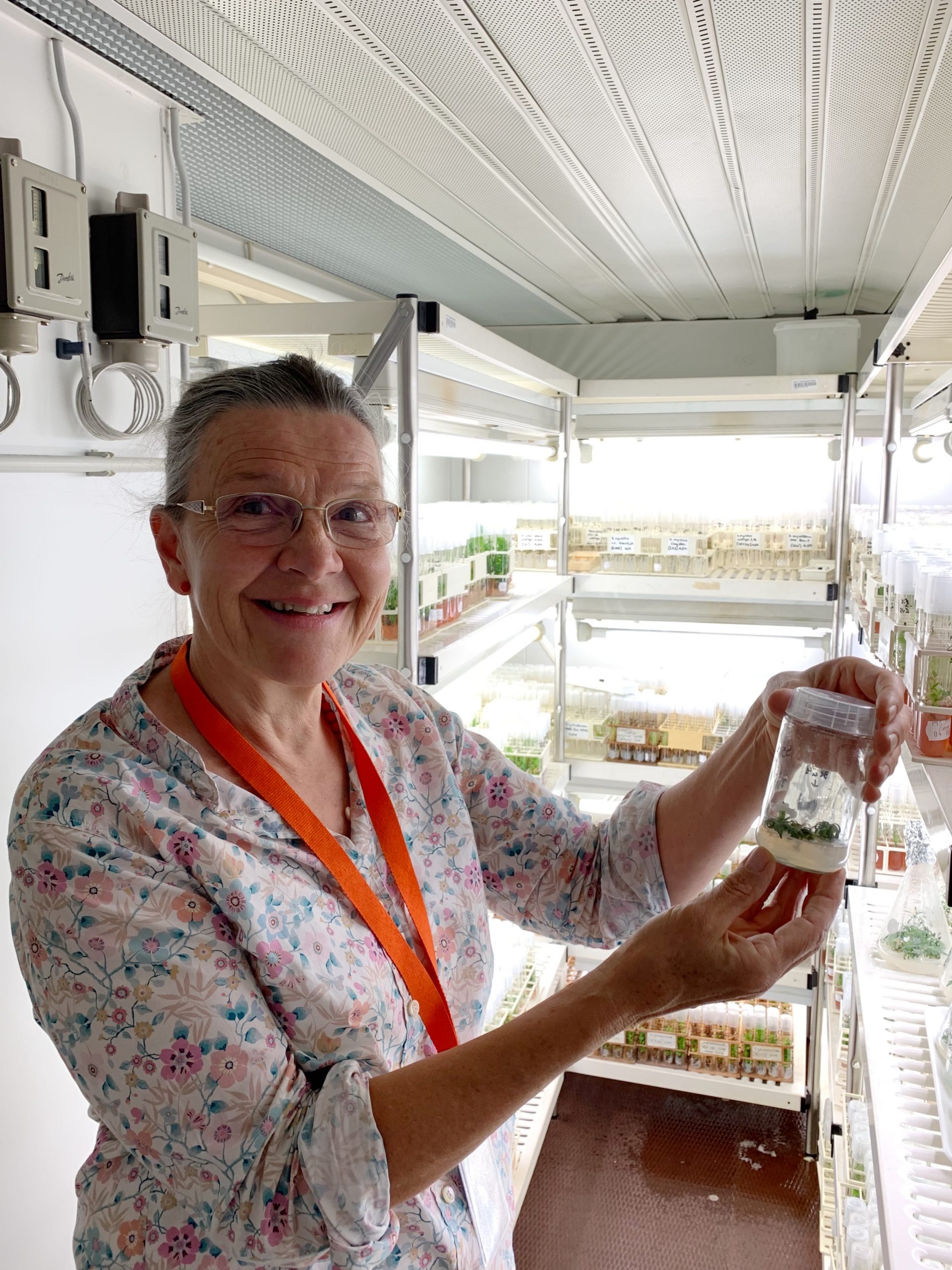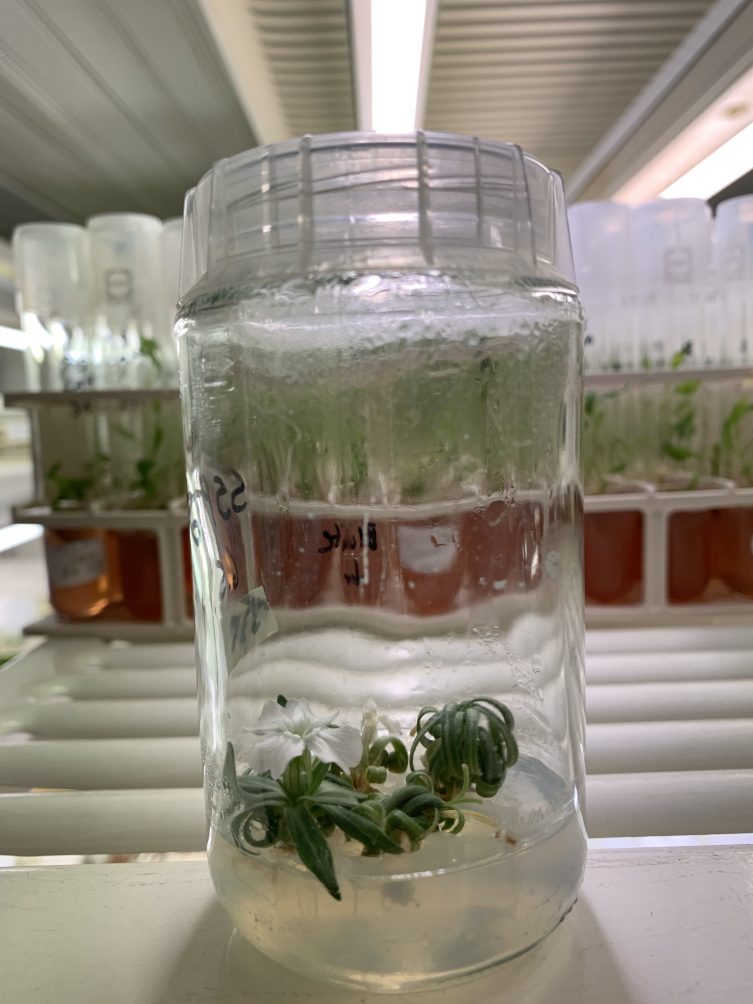
Professor Margit Laimer has succeeded for the first time in making a 32,000-year-old plant blossom in vitro. It is the oldest plant that has ever been recultivated. The plant cells survived in the earth of Arctic silica in the Siberian permafrost. The biotechnologist speaks of a stroke of luck:
“Now we can study how the genome of this plant has changed over the last 32,000 years. We have a point zero and can compare it with its current relatives.”
The researcher is hoping for exciting scientific findings and an answer to the question of how evolutionary development has proceeded. The seeds are the oldest ever found. When they arrived in the laboratory of Svetlana Yashina from the Russian Academy of Sciences in Pushchino, it was initially unclear what kind of plant species they were. Seven years later, her team succeeded in growing the plants in vitro as tissue cultures. The plant arrived in Vienna, Austria on loan in connection with an art exhibition at the Museum of Modern Art (MUMOK). Professor Laimer is a researcher at the Institute of Molecular Biotechnology at the University of Natural Resources and Life Sciences (BOKU) in Vienna and has assumed the scientific guarantee. To keep it alive, the plant is replanted every four weeks in a new nutrient medium. “This medium contains nutrient salts, sugars and hormones that the plants consume during growth,” she explains. After the exhibition, the researchers decided to apply for a Russian/Austrian research project to study the plant together. Since then, the plant has been in Professor Laimer’s laboratory at BOKU in Vienna, where it bloomed at the end of June 2020. We interviewed the researcher.
When the Russian researchers made the plant grow in vitro, did they know what species the seeds were?
No. They successfully cultivated Silene stenophylla, a clove plant, from unknown seed types. There are many types of silenas and the scientific name (nomenclature) is not yet completely certain. We see the silene as a pioneer. We could also grow other seeds from earth cultivation in vitro. Every plant cell is able to call up its entire program and grow a whole plant. Only plants have this property, called totipotency.
The term goes back to the Austrian botanist Gottlieb Haberlandt who published a paper on the subject at the Austrian Imperial Academy of Sciences in 1902. Totipotency means that a plant cell can call up its entire genetic program if kept under the right conditions. However, proof of this was not provided until 1939. Haberlandt himself did not manage to do it.
What exactly do you mean by tissue culture? And why is it necessary in this case?
It is a technique by which we stimulate plant cells to grow under precisely controlled conditions. For example, our colleagues in Russia said: “Make a plant” and we said: “Make a flower.” If we were to cultivate the plant in a greenhouse, for instance, there would be dangers such as a fungal attack because the conditions cannot be controlled as precisely as in tissue culture or in vitro.

What does tissue culture look like?
These are different vessels that are completely sterile and allow the cultivation of plant cells under controlled temperature and light conditions. However, tissue culture must be mastered precisely to grow a new plant from a cell. This is a great way to preserve genetic resources and get rid of pathogens such as viruses and phytoplasmas, etc. Phytoplasmas are bacterial cells that are very mobile because they do not have a cell wall, but are instead surrounded by a thin-walled membrane. They can cause great damage in cultivated plants. Over 200 harmful phytoplasmas have been discovered in crops. Unfortunately, research looks at plant diseases in the wild far too rarely. They say it takes sensitivity and experience to make a plant grown in vitro flourish.
How did you come to have this experience? What is your approach to the subject?
I have been dealing with the techniques of plant tissue culture since I did my doctoral dissertation. I also founded a working group for plant biotechnology to use tissue culture to first produce virus-free plants and later virus-resistant plants.
What are your plans for the Russian/Austrian research project?
We would like to make an expedition to Siberia in the coming year to collect and revitalize new material. With this we want to do exciting things, like paleogenesis. So far, this is only known from the attempts to revive mammoths.
What scientific insights can you theoretically gain from the development of the genome?
It is exciting to see what climate change has done since then that the plant was not exposed to, but which its contemporary relatives have experienced. As a result, genes, regulatory sequences or the gene expression of different organs may have changed. When you breed, you try to increase the mutation rate, because the natural mutation rate is not sufficient. Therefore breeders look for very distant relatives. If they used very similar parents for crossing, the offspring would have the same agronomic characteristics.
If one finds that so and so many nucleotides (bases) have changed in this plant species, one can assume that this is associated with new characteristics, such as properties that indicate that it was very cold when the plant was alive. This can be compared to our alpine plants, which are moving further and further up the mountain due to global warming. From these characteristics one can conclude how descendants have adapted to changing conditions and which forms were favorable or unfavorable.
What consequences for climate change would this allow?
How the plant copes with climate change. But this could also be done in parallel with our alpine plants. This can only be studied in the very long term.
What research questions will you pursue?
We are only just in the process of formulating them and are not ready to publish them just yet.
What research methods do you use?
A certain method of preserving the tissue culture, meaning we will not put the plant in the greenhouse. Then we will characterize the phenotype, which is the visible morphological characteristics of an organism. These are the result of the interaction of genetic and environmental factors. The study of genotypic characteristics shows us the genetic composition of an organism or the combination of hereditary factors behind a characteristic. In doing so, we want to analyze the changes in the genotype in the plant living today compared to the primeval plant.
How long will the research take?
We estimate it will take three to four years.
What is the growth cycle of the silenas?
The silene is a perennial plant that grows to be more than two years old, depending on the environmental conditions. But through vegetative cultivation in vitro it is constantly the same and theoretically immortal, provided that it is regularly transferred to a new culture medium.
Does this mean that the silene does not go with the seasons in vitro?
Yes, at a continuous temperature of 24 degrees Celsius plus or minus two degrees, there will be no leaf fall or dormancy in winter. But it is important to control the medium carefully and to provide the plant with fluctuations via light conditions and culture medium. This is not a tropical plant that lives at constant temperatures. But old plants grow faster if you give them variation.
What was the climate like at the time of the original plant?
To talk about the climate 30,000 years ago is beyond my competence. But I’m sure it was cold. Otherwise the mammoth would not have been hairy – and the location of the site in Siberia also suggests it was cold. When we go on the expedition to the region where the mammoth was found, we also want to find out whether obtaining information on the climate is possible. For example, it is suspected that the burrow of the Arctic ground squirrel was buried or caved in, but we do not know how. Therefore geologists will be part of the team. It will be an interdisciplinary research project.
Thank you for the interview.







